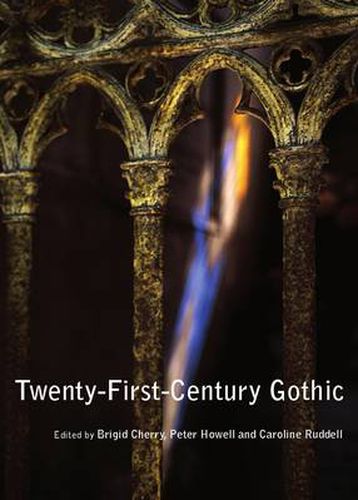Readings Newsletter
Become a Readings Member to make your shopping experience even easier.
Sign in or sign up for free!
You’re not far away from qualifying for FREE standard shipping within Australia
You’ve qualified for FREE standard shipping within Australia
The cart is loading…






The essays in this volume reinterpret and contest the Gothic cultural inheritance, each from a specifically twenty-first century perspective. Most are based on papers delivered at a conference held, appropriately, in Horace Walpole’s Gothic mansion at Strawberry Hill in West London, which is usually seen as the geographical origin of the first, but not the last, of the many Gothic revivals of the past 300 years. In a contemporary context, the Gothic sensibility could be seen as a mode particularly applicable to the frightening instability of the world in which we find ourselves at the beginning of the twenty-first century.The truth is probably less epochal: that Gothic never went away (when were we ever without fear?), or at least has persisted since its resurgence in the late nineteenth century. Gothic is at least as modern as it is ancient, and each essay in this collection contributes to current scholarship on the Gothic by exploring a particular aspect of Gothic’s contemporaneity. The volume contains papers on horror novels and cinema, poetry, popular music and fan cultures.
$9.00 standard shipping within Australia
FREE standard shipping within Australia for orders over $100.00
Express & International shipping calculated at checkout
The essays in this volume reinterpret and contest the Gothic cultural inheritance, each from a specifically twenty-first century perspective. Most are based on papers delivered at a conference held, appropriately, in Horace Walpole’s Gothic mansion at Strawberry Hill in West London, which is usually seen as the geographical origin of the first, but not the last, of the many Gothic revivals of the past 300 years. In a contemporary context, the Gothic sensibility could be seen as a mode particularly applicable to the frightening instability of the world in which we find ourselves at the beginning of the twenty-first century.The truth is probably less epochal: that Gothic never went away (when were we ever without fear?), or at least has persisted since its resurgence in the late nineteenth century. Gothic is at least as modern as it is ancient, and each essay in this collection contributes to current scholarship on the Gothic by exploring a particular aspect of Gothic’s contemporaneity. The volume contains papers on horror novels and cinema, poetry, popular music and fan cultures.